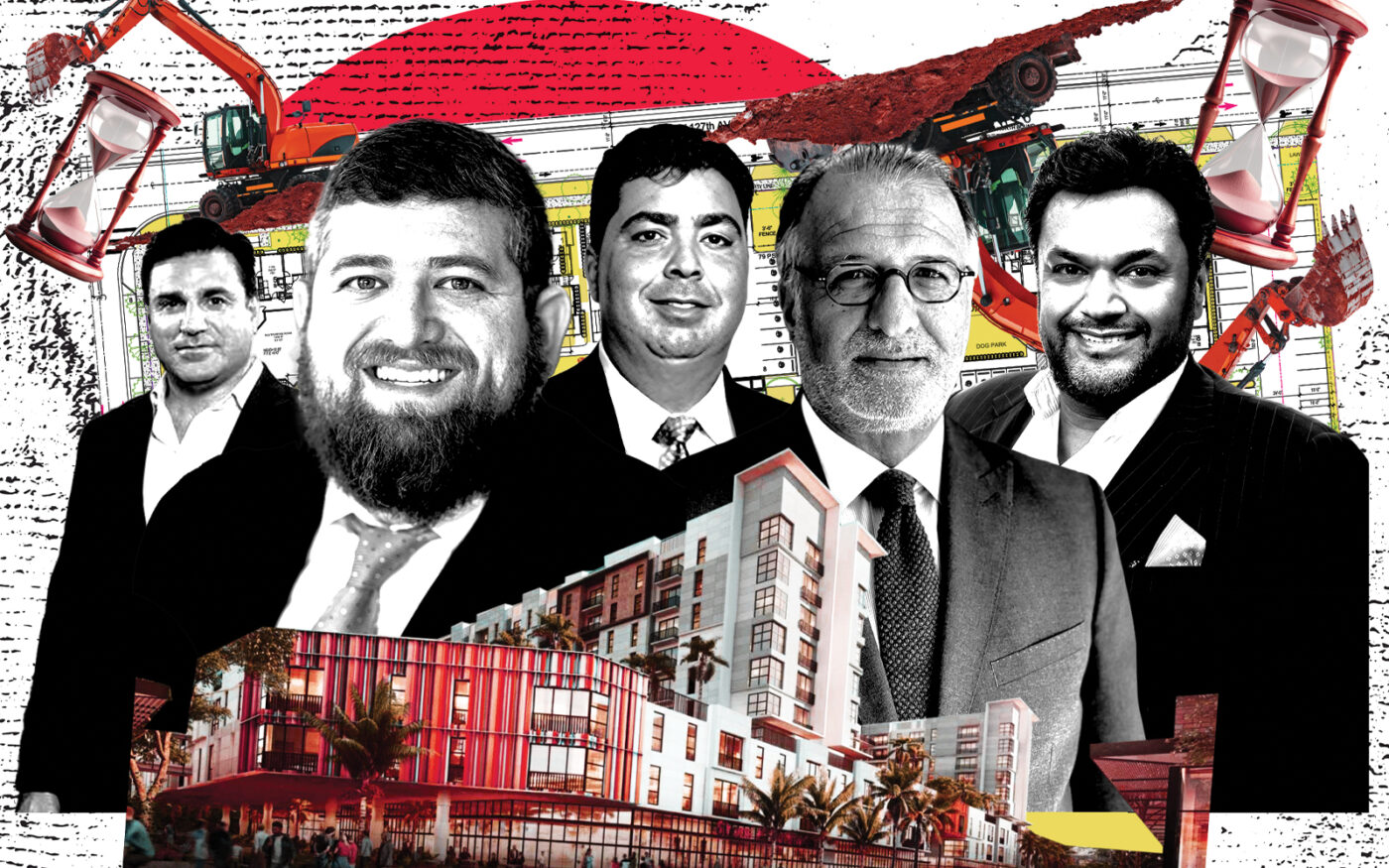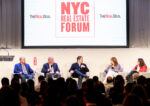‘In a holding pattern’: South Florida apartment developers pause projects
It’s not just higher interest rates and skittish banks, as tri-county region has record construction underway amid flatlining of rents

Developer Dan Kodsi isn’t rushing to build multifamily projects in South Florida.
Two years ago, he jumped into the market with proposals for an apartment tower in Aventura and another in Miami. Now, he’s reevaluating the developments and tweaking both.
“It’s too expensive to build [high-rise] apartments today,” Kodsi said. “The margins are very razor tight, and let’s just say capital right now is not leaning to multifamily.”
South Florida multifamily developers are altering their projects or pausing plans altogether. It’s a turnaround from the past three years, when developers seized on unprecedented demand as the tri-county region became a magnet for out-of-state residents and record rent hikes ensued.
More recently, a confluence of factors is stopping the boom in its tracks. Although much concern nationwide has been over tighter bank lending and elevated interest rates, South Florida is also home to skyrocketing insurance premiums, including for builder’s risk, and construction costs are still higher than pre-pandemic. South Florida also has a record number of units on tap, saturating the tri-county region, while leasing has slowed and rent growth calmed, according to experts.
Apartment construction starts dropped 41 percent in Miami-Dade, 12 percent in Broward County and 21 percent in Palm Beach County during the past two quarters, compared with the same period a year ago, according to Dodge Construction Network.
“The macroeconomics has created a lot of headwinds. A lot of projects are in a holding pattern,” said Sonny Maken, COO of Associated Builders and Contractors’ Florida East Coast Chapter. “People are worried about units being overbuilt. They are trying to get clarity on the demand.”
Kodsi, CEO of Miami-based Royal Palm Companies, is finding workarounds. He wants to switch his Miami apartment tower to condos. Instead of a 15- to 20-story building in Aventura, he’s considering an eight-story project, which eliminates the need for a garage podium amid high concrete costs.
“Every developer sitting on a high-rise [project] is going through the same analysis we are going through,” he said.
Apartment overload, rent freeze
Over 40,700 units are under construction across South Florida, according to CoStar Group. That’s just shy of the 42,500 units that were under construction in 2022, a record since at least 2006.
Miami-Dade is leading with over 22,700 apartments on tap, while Broward has more than 10,800 units under construction and Palm Beach County has over 6,200.
The submarket hosting the biggest chunk of the activity is downtown Miami, where more than 9,500 units are under construction. Central Fort Lauderdale comes in second with more than 4,300 units underway.
At the same time, the leasing frenzy is gone. Nearly 11,200 units were occupied in the 12-month period that ended March 31, down from the peak in 2021 of 28,400 occupied units, CoStar’s data shows.
“The macroeconomics has created a lot of headwinds. A lot of projects are in a holding pattern.”
By now, rents have flatlined, with some data showing they’re dropping. A Realtor.com report shows that South Florida’s median rent dropped 3.4 percent in February, year-over-year. In March, Florida led the nation with the biggest drop in average rent of 8.8 percent, year-over-year, with Miami experiencing a 0.7 percent decline, according to Rent.com.
That’s in stark contrast to South Florida leading the nation with record rent hikes from 2020 to 2022.
At completed apartment buildings in prime neighborhoods, landlords are offering concessions to newly signed tenants. 10X Riverwalk, a 25-story, 260-unit tower on Fort Lauderdale’s New River, lists an offer of $1,500 off the second month’s rent, according to its website. Society Wynwood,, which is expected to be completed this year, is offering would-be tenants two months of free rent.
The drop in rents is a hit to developers’ budgets.
Last summer, the Ardid family’s Key International and Wexford Real Estate Investors dropped $25.5 million for a 2-acre development site in Boca Raton, with plans for a 12-story, 190-unit apartment building. Construction has not started.
“If you are selling a condo for $5 million, and now you have to sell it for $7 million [due to higher construction costs], those buyers can stretch that,” said Inigo Ardid, co-president of Key. “The problem is when you are renting a unit … and your end user is the working class, there is a lot less price flexibility on their part.”
Not “the rosiest”
Although Onyx Housing Group will pursue development of nearly 800 apartments in three south Miami-Dade projects, timing is everything.
“The market hasn’t exactly been the rosiest,” said Shadi Shomar, a partner in Onyx, adding that the firm will roll out the projects one by one. “Even within a project, we stagger it in such a way that we are not overwhelming the market … at once, in a relatively small geographic area.”
The Miami-based firm has commitments for HUD-backed loans with a spread about 1.5 percent less than traditional financing. Unlike most apartment construction debt, the loans will be at fixed rates, based on the 10-Year Treasury rate at the start date of construction.
“We are just waiting it out to see where interest rates [will be], so we don’t start at the wrong time,” Shomar said, referring to the expectation that the Fed will cut the benchmark interest rate this year.
“Developers saw the writing on the wall and started looking at other markets in Florida, where we believe we can still make margins.”
In West Palm Beach, Immocorp Capital started building a 382-unit project — without a construction loan. The Aventura-based firm and its project partner, New York-based Beachwold Residential, have financing commitments, but they’re waiting for rate cuts before closing. In the meantime, they’re using their own equity to take the $170 million, three-building project as far as the shell buildout.
Although equity is often touted as an alternative to expensive financing, it’s not a savior. Developers are having a hard time securing equity investors, who are steering clear of multifamily projects due to lower returns, said Ben Jacobson, partner at Forman Capital.
“Everything got more expensive since Covid,” he said, adding that rent increases are no longer a feasible way to offset higher costs. “There’s only so much money to go around, so you can’t make that equity [return] more profitable.”
Nickel and dimed in South Florida
Non-residential construction costs nationwide increased 8 percent in 2022, year-over-year, and 6 percent last year, according to Turner Building Cost Index.
In South Florida, high demand for labor amid the hefty construction pipeline allows subcontractors to quote higher costs, according to Maken, of ABC’s Florida East Coast Chapter. As the labor workforce ages, their jobs aren’t getting filled quickly.
“I had a member tell me they were going to lose in the next year or two like 34 plumbers to retirement. They are struggling to fill the need” he said.
Kodsi found some reprieve on material costs. While he tweaks his Miami-Dade projects, he’s moving forward with a 420-unit garden-style apartment complex near Orlando. Unlike South Florida, where the code mandates concrete construction, Central Florida allows developers to build with lumber, a cheaper material.
“Developers saw the writing on the wall and started looking at other markets in Florida, where we believe we can still make margins,” he said.
Royal Palm is known for such high-end condo projects as Paramount and Legacy Hotel & Residences, both at Miami Worldcenter, but multifamily is its “bread and butter,” Kodsi said.
However, “budgets have to be really tight. You don’t have a lot of room for error,” he said. “The apartment business is a nickel and dime business.”




